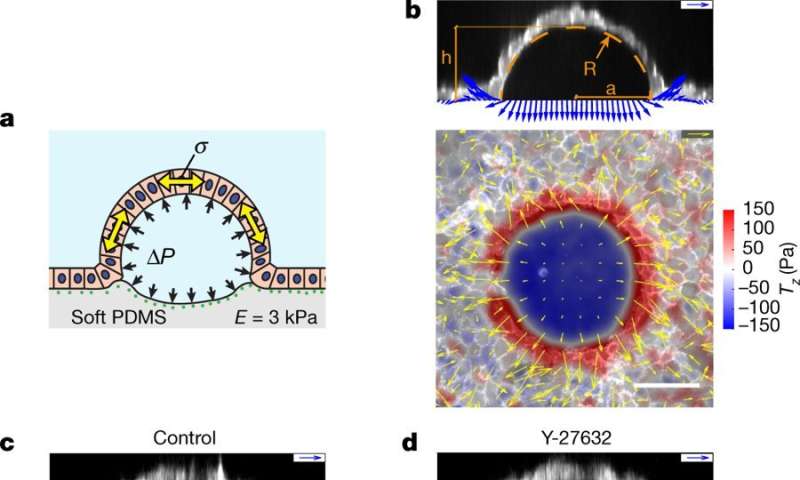November 1, 2018 report
Researchers find that cells can at times have superelastic properties

A team of researchers from Spain, France, Germany and Singapore has found that some cells under certain conditions can exhibit superelastic properties. In their paper published in the journal Nature, the group describes their study of epithelial cells and what they found. Manuel Théry and Atef Asnacios with Paris Diderot University have written a News and Views piece on the work done by the team in the same journal issue.
Prior research has shown certain body parts exist under tension—skin is a good example. Its tension is apparent in gashes that appear when it is cut. Tension in organs is caused by tension in cells. Prior evidence has also shown that elements inside of cells can both cause and resist tension due to cytoskeletal filaments that transmit force. Such filaments in actin are what give cells their shape. And adhesion sites between cells can relay such forces causing tension to build up across an entire organ—like skin.
Prior research has also shown that when cells undergo small deformations, they are usually elastic, meaning the cell can return to its normal shape after the cause of the deformation has been removed. When large-scale deformations occur, however, cells can be stretched beyond their limit, at which point they are pulled apart at adhesion points and deformations become permanent. But now, it appears that cells sometimes become superelastic—able to stretch beyond their normal limits and then to rebound without any signs of permanent damage. Study of cells in such a state by the research team showed they were able to become superelastic even without an increase in tension. And after the cell returned to its normal state, it showed no signs of ever having been superelastic.
Théry and Asnacios note that the findings of the research team are particularly surprising because skin has been extensively studied over several decades and no other evidence of superelasticity has been observed. They suggest this is due to the way elasticity has traditionally been tested—in short bursts. In this new effort, the researchers studied single layers of epithelial cells over several hours. Unfortunately, after taking a closer look at the properties of superelasticity in cells, the researchers were not able to explain how it happens.
More information: Ernest Latorre et al. Active superelasticity in three-dimensional epithelia of controlled shape, Nature (2018). DOI: 10.1038/s41586-018-0671-4
Journal information: Nature
© 2018 Science X Network





















